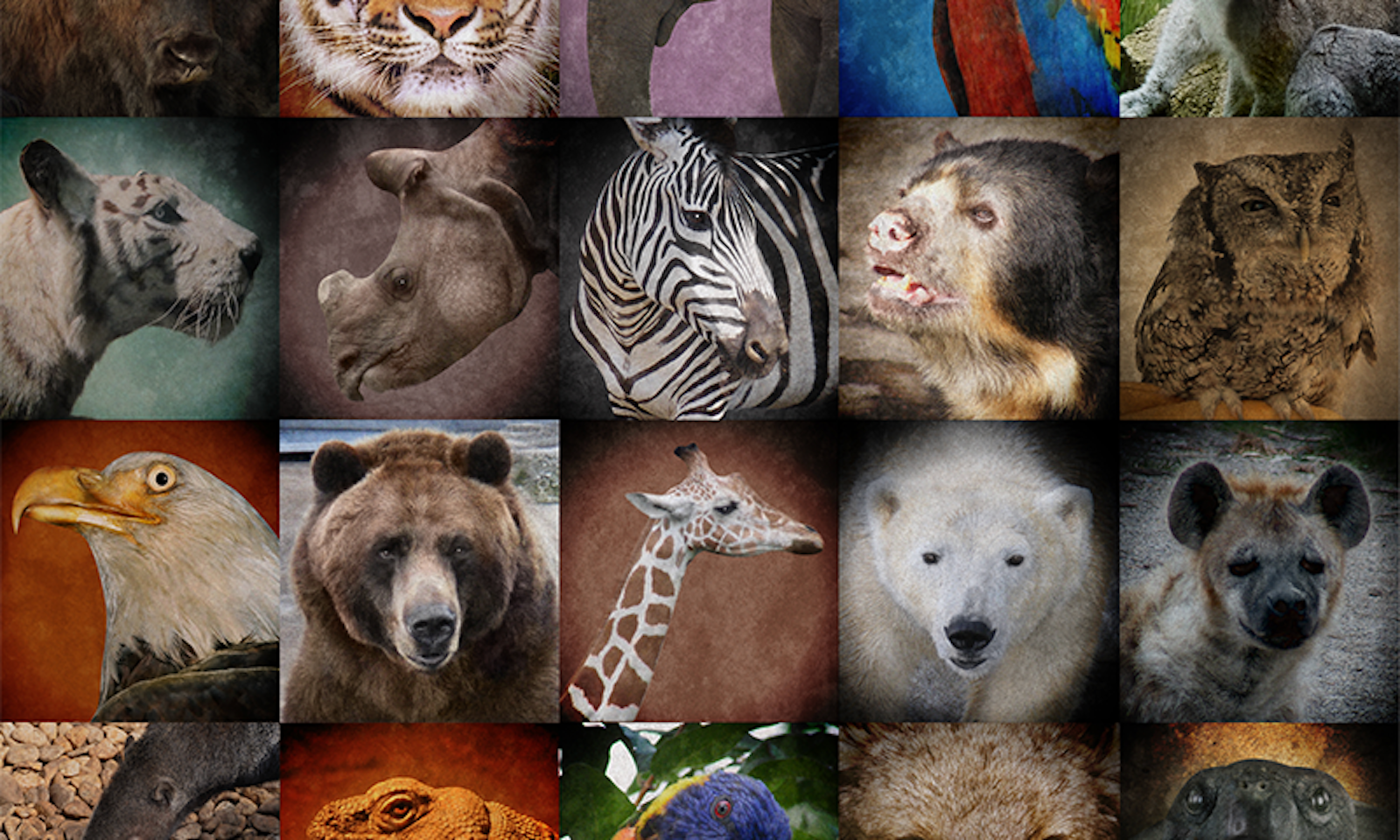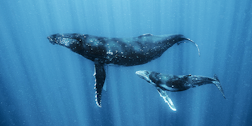When he can spare the time, Jan Mees is an exorcist of scientific ghosts.
A marine biologist, Mees’s full-time job is directing the Flanders Marine Institute in Ostend, Belgium, but his side project is serving as co-leader of an international group of volunteer scientists. Together, they’re working to build a World Register of Marine Species, a comprehensive database vetting the accuracy of scientific names for aquatic life. It was a daunting task from the beginning, but Mees and his colleagues have been surprised by how much of their work involves not adding to the register but subtracting from it.
After analyzing 418,850 species, the project has eliminated 190,400 of them—more than 45 percent—as redundant. The species felis and Triakis semifasciata, for instance, are in fact both the leopard shark. Octopus rooseveltii, named in 1941 as a tribute to then-president Franklin Delano Roosevelt, already existed as Octopus oculifer, named in 1909. No one knows how many previous generations of marine biologists devoted their careers to studying a notional species, not realizing that their peers were studying it under different names.
Ultimately, 24 to 31 percent of all current species names will eventually be discarded as redundant.
One of the most prolific over-classifiers, they’ve discovered, was 19th-century biologist Louis Agassiz, who eagerly declared and named North American species based on little evidence, and even less scientific rigor.
Viewing a single sample of fossilized teeth, Agassiz determined they defined not three different species but three completely new genera of fish. They’ve since been matched to teeth belonging to the fossil of a single individual fish, collapsing an entire branch of his imagined taxonomy. Hundreds of Agassiz’s species identifications have been abandoned on similar grounds.
Presently, the greatest single instance of systematist ephemerality is the case of Litteronia saxatilis, a shore-dwelling sea snail commonly known in English as the rough periwinkle. Easily found on beaches on both sides of the North Atlantic, the rough periwinkle long ago developed the ability to blend into its immediate marine environment by varying the size, the coloration, and even the shape of its shell.
The mollusk inside the shell is unchanged, but two centuries of classifiers, not only focusing on external morphology but accepting empty shells as definitive type specimens, made the rough periwinkle the “champion of taxonomic redundancy,” according to Mees. Since its initial naming in 1792, Litteronia saxatilis has been identified, named, and cataloged as a separate species or subspecies no fewer than 112 times. The World Registry of Marine Species has quietly erased those identifications, retroactively updated the scientific literature to point to the original designation, and moved on.
Why so many duplications?
Most are products of the Linnean emphasis on appearance, which allowed minor physical variations to be interpreted as novel species. Some constitute genuinely separate discoveries, obscured by the difficulty of reviewing printed scientific literature in the days before digitization and database searches. Still more are the results of overzealous imaginations, seeking a measure of immortality by declaring a “discovery” where none existed.

To estimate how many officially designated species are mistakes or duplicates, on land as well as underwater, John Alroy, a paleobiologist at Macquarie University in Sydney, Australia, has devised a “flux ratio,” a predictive metric extrapolated from the number of corrections already made to taxonomic data. Alroy’s flux ratio predicts that ultimately, 24 to 31 percent of all current species names will eventually be discarded as redundant.
We’ve also been subject to a different kind of illusion: seeing one species where in fact there are several.
One of the more surprising results of genomic analysis is the discovery in 2021 that the giraffe, believed to be a single species since Linnaeus named it Giraffa camelopardelis in 1758, is in fact four distinct species, genetically distinct for at least a million years. This startled zoologists, who are now rushing to reevaluate everything thought to be known about what seemed a familiar animal. “To put our results into perspective, the genetic differences between the distinct giraffe species are similar to those between polar and brown bears,” says Axel Janke, a geneticist at Goethe University in Frankfurt, Germany. “We’ve clearly completely forgotten what a giraffe is.”
The finding has also galvanized conservationists. As a single species, giraffes were already classified as “vulnerable” on the International Union for Conservation of Nature’s list of threatened species. Now understood as separate species and therefore separate populations, at least three of the four meet the criteria for reclassification as “endangered” or “critically endangered.”
As we’ve come to realize, species exist in mind-boggling numbers. Even with the elimination of duplicated or imaginary species, we’re forced to confront the fact that we’ve barely begun the tally of life’s diversity. As advances in genetics now make clear, the number of extant species—as defined by genetically distinct reproductive populations—is vastly greater than previously imagined.
How much greater?
That number keeps revising upward. In 2011, the most exhaustive survey of biodiversity yet undertaken came up with an estimate of 8.7 million species, of which only 1.2 million had been cataloged thus far. That estimate meant that 86 percent of all land-dwelling species, and 91 percent of all aquatic species, remained undiscovered.
Yet those numbers were dwarfed by a preliminary report five years later from the National Science Foundation. An NSF project called Dimensions of Biodiversity is using gene sequencing to identify species down to the microbial scale, and while it will take years for full results to emerge, project members already estimate the total number on Earth is more than 20 orders of magnitude greater than previously understood.
“Until now, we haven’t known whether aspects of biodiversity scale with something as simple as the abundance of organisms,” reports Kenneth J. Locey, a postdoctorate fellow at Indiana University and a Dimensions of Biodiversity researcher. “As it turns out, the relationships are not only simple but powerful, resulting in the estimate of upward of 1 trillion species.”
One trillion species. That would mean we’ve discovered and recorded only 1,000th of 1 percent of all possible entries in a catalog of life.
While genome-sequencing technology gets faster and cheaper each year, it also produces cladistic connections that strain our ability to grasp at the larger whole.
In classical taxonomy, birds presently remain in Linnaeus’s original class of Aves. In the separate Linnean class of Reptilia, alligators and crocodiles belong to the order Crocodylia, while lizards and snakes currently occupy the order Squamata. To a mindset based on morphology, this makes perfect sense: Crocodiles, lizards, and snakes resemble each other far more closely than any of them resemble birds.
The giraffe, believed to be a single species since 1758, is in fact four distinct species.
But cladistics traces monophyletic evolution—that is, descent from a common ancestor. Despite their appearance, Crocodylia are the closest living relatives of Aves, both having emerged from the cladistic group Pseudosuchia around a quarter of a billion years ago. An alligator is more closely related to a peacock than it is to a Komodo dragon. That Komodo dragon is more closely related to you.
Some of the most disorienting results of cladistic taxonomy are underwater. The genus of Cancer, or crab, is now understood to be a broad collection of genetically distant species—in other words, not a genus at all. The advantages of developing a crablike anatomy are such that multiple monophyletic lines (organisms descending from a common ancestor) evolved into a convergent body shape, creating close resemblances in spite of vastly dissimilar origins.
And while Linnaeus ultimately recast the class Pisces, or fish, to exclude whales and other cetaceans, so many evolutionary paths have adapted to free-swimming undersea life that Pisces has now been retired entirely. What we informally group as fish represent more than a dozen different monophyletic lines of descent, so genetically diverse that, as some biologists have enjoyed pointing out, “fish” do not really exist. If one drew a cladistic circle broad enough to encompass all fish, the circle would include humans as well.
Yet humans need “fish,” or something very like the concept of “fish,” to make sense of the world.
Words are not just units of speech; they are units of thought. The decisions we make in organizing the world tend to disappear once we’ve made them, but they’re inevitably encoded in language.
Take colors, for instance. Among English-speaking people, we distinguish pink as a separate color from red. In the Malaysian language (Bahasa Malay), however, there is no pink. There is only merah, red. You can try to approximate a concept of pink by describing it as “light red,” but even then you’d be imprecise: The closest term in everyday use is merah muda, which means literally “young red,” and which can designate a bright red as well as a light one. You can convey the sense of pink by evoking a pink object, such as merah jambu, or “red like a guava.” The only problem is that you’re now describing not a range of shades but one shade in particular: the pink of a guava skin. Speaking Malaysian, of course, does not confer color-blindness, but to an Anglophone such vagueness can seem like an awkward and inaccurate approach to color. Why not just coin a word for “pink” and have done with it?
As language-bound human beings, we still require the semantic construct of agreed-upon labels.
Yet English does exactly the same thing. We have no equivalent of pink for the blue portion of the spectrum. If you are not content with the vagueness of “light blue,” you have no choice but to get hyper-specific—“robin’s-egg blue,” for instance. In other words, there’s a chromatic gap in our language just as big as the one in Malaysian. But if you’re like most native English speakers, you’ve probably never noticed it.
In contrast, Russian speakers learning English notice it right away: Their language divides up our “blue” into two colors, the paler goluboy and the darker siniy. What’s fascinating is that these distinctions are more than technicalities. They become hardwired into our brains. Neuroscientists have found that native Russian speakers are measurably faster than native English speakers at distinguishing dark-blue shades from lighter ones, presumably because, in their minds, the difference between goluboy and siniy is clear-cut.
As language-bound human beings, struggling to understand life’s complexities, we still require the semantic construct of agreed-upon labels. A team of biologists, Francine Pleijel and George Rouse, have proposed the LITU, or “least-inclusive taxonomic unit,” to replace the concept of species entirely. These would be provisional identities, which they describe as “statements about the current state of knowledge (or lack thereof )”—snapshots rather than static points, documented under the assumption that they might change as more genetic information becomes available.
This would move us away from lectotypes, allotypes, and other type specimens, a shift Pleijel and Rouse strongly advocate. According to them, “making taxonomists decide that a few dead specimens represent a species is an extravagant extrapolation that has no place in science.” Scientists are “forced by the existing codes of nomenclature to describe organisms as species when in fact they generally have no idea of what is going on in nature.”
Physarum polycephalum defies the foundations of Linnean thought. It is an ordinary tree slime, common in European and North American forests, classified and labeled in 1822 but otherwise ignored until 1970, when a teaching assistant at Iowa State University discovered a surprising characteristic: The slime not only had an immune system but one that functioned externally rather than internally.
A sample of polycephalum, taken from a rotting elm log, kept infections at bay by secreting an antiviral substance so potent that when sprayed upon crops it was 100 percent effective in eliminating tobacco mosaic, a potentially devastating virus that blighted not only tobacco plants but tomatoes, peppers, and cucumbers as well.
Over the course of the past five decades, more of the organism’s extraordinary aspects have come to light. As we’ve now discovered, it is neither an animal, a plant, nor a fungus. It can hibernate for years at a time. It has no musculature, yet it moves itself at a brisk 1.6 inches an hour. It is, somehow, a single-celled organism. (The Guinness Book of World Records proclaims it the largest cell on the planet.) If separated, segments are fully capable of operating independently, then reintegrating into the whole. They can even merge seamlessly into different specimens, gathered from different locations. Individual existence, it appears, is optional.
Its seeming simplicity belies an extraordinarily complicated sex life. Instead of two genders, male and female, Physarum polycephalum has 720 distinct forms of mating pairs, methods of inducing genetic variety that are the functional equivalent of genders. Sexuality and reproduction, as we’ve come to understand, accommodate a multitude of themes and variations.
Physarum polycephalum is also capable of learning. In order to most efficiently find food sources, it spreads itself out in a pattern both expanding and self-correcting, until it has covered the maximum amount of territory with the least amount of resources. By this measure, it can be seen as intelligent: The highly efficient networks it creates can find the quickest path out of a labyrinth or the shortest routes to connect multiple locations. In one experiment, it was presented with multiple food sources (in this case, oat flakes), placed in a pattern that replicated the geographic locations of Tokyo and 36 towns in the surrounding region. The slime mold reached out to all food sources with pathways that nearly replicated the Japanese rail system connecting those locations—a system carefully designed by humans to operate as efficiently as possible.
Despite its lack of a central nervous system, much less a brain, it’s also capable of remembering. Somehow, it manages to retain what it’s learned. If placed in the same labyrinth weeks apart, it will recognize the maze and re-create its previous escape route. Even a small piece of the original will do the same.
We don’t fully understand polycephalum’s intelligence, but that’s not keeping us from collaborating with it. In fact, we’ve recently recruited it to help us explore the cosmos. Current astrophysical theory holds that following the Big Bang, all matter in the universe dispersed in a pattern creating filaments between adjacent galaxies. Physical evidence of this dispersal is difficult to discover, since the filaments consist of thin, diffused streams of hydrogen gas. Astronomical instruments can detect these filaments, but only if pointed directly at them.
How to point the instruments in the right direction? By predicting in advance where these streams will be. To do that, astrophysicists have turned to polycephalum, harnessing the same efficiency it uses to solve mazes and re-create the Tokyo metropolitan train system. Using an artificial intelligence program designed to emulate the spore as closely as possible, they’ve been feeding it galactic maps and asking it to make connections. “A slime mold creates an optimized transport network, finding the most efficient pathways to connect food sources,” observes Joseph Burchett, the project’s chief researcher. “In the cosmic web, the growth of structure produces networks that are also, in a sense, optimal. The underlying processes are different, but they produce mathematical structures that are analogous.”
So far, the project has traced the connections between more than 37,000 galaxies. It’s just getting started, but it’s already demonstrated the power of shifting our perception of the living. Of approaching nature not as static objects to be inventoried, but as dynamic, interdependent manifestations of a greater whole.
To exist is to coexist. To be is to be in conversation.
In the words of pioneering 18th-century French naturalist Georges-Louis de Buffon: “Nature is not a thing, for this thing would be everything.” ![]()
Excerpted from Every Living Thing: The Great and Deadly Race to Know All Life © Jason Roberts, reprinted with permission of Random House.

Lead image: CreativeAngela / Shutterstock





















